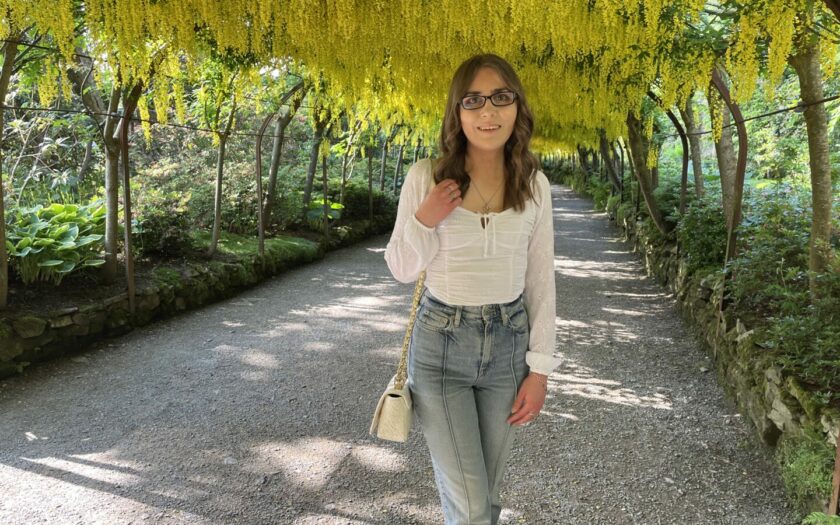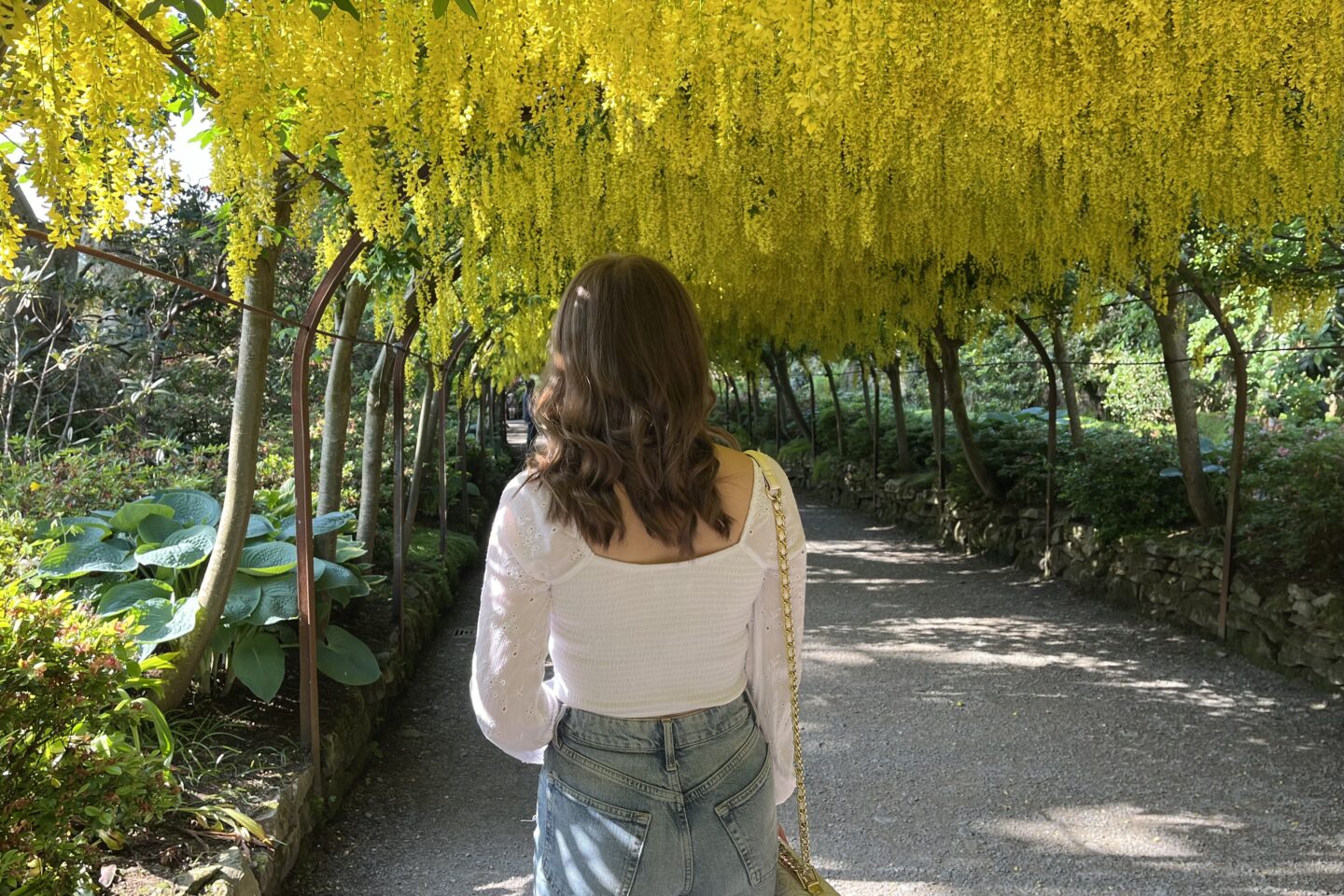Skip to content

‘I don’t deserve that adjustment.’
‘I shouldn’t ask for support.’
‘I’ll keep that thought to myself, it makes me seem negative.’
These are some of the lies I believed as truth as I navigated the often rocky terrain of growing up as a disabled person, all courtesy of the discrimination and stereotypes that exist in society.
We aren’t often told or taught about ableism, nor are we truly equipped with resources or support to deal with it. I was well aware of the stereotypes and misconceptions that are out there when I was growing up but it’s not until I graduated into my late teens and early twenties that I truly got to grips with the concept of ableism and how I had been unconsciously internalising it for the best part of my life.

Ableism, in the way I’ve come to understand it, is the product of discrimination and prejudice and is often rooted in the assumption that disabled people are a problem that need to be ‘fixed’. Internalised ableism is therefore an extension of these negative attitudes and sees us as disabled people projecting those views onto ourselves.
I’ve always wielded a positive mindset as a shield against the misconceptions and stereotypes that are out there but there’s only so much hits that armour can take. It’s not until I look back now that I realise how much ableism infiltrated my thoughts and manipulated the different attitudes I’ve had towards certain aspects of life as a disabled person over the years.
I recognise it in my rejection of the white cane and my reluctance to ask for more support when I was in education. There’s evidence in old blog posts where I openly confess to feeling like life would be easier if I wasn’t vision impaired.
That was the ableism talking and conducting the orchestra of my life at the time, encouraging the music to become so loud that any voice of reason was impossible to hear.
That’s the thing when discrimination is so rife, it’s hard to prevent it from invading our own minds, colouring our thoughts and coaxing us into the belief that we are not worthy, that we don’t belong, that we’re not equal.
However, as I continue to discover resources and information about my rights as a disabled person, I’m slowly coming to the realisation that I face enough barriers and discrimination without internalising it and experiencing it twice at the hands of my own thoughts. So, here are just a few things that have and continue to help me in my pursuit to address my internalised ableism.
SEPARATION
Over the years, I’ve found that one of the hardest things is separating the opinions of others from my opinion of myself and let me tell you, that entanglement has had many consequences.
When I was younger, I could rarely walk into a room without believing that people were exchanging glances and trading whispers behind my back. The misconceptions that existed in those interactions became a baseline for so many conversations and it became difficult for me to bat away the stereotype-tinged words.
This meant that negative and outdated attitudes became something that I expected and almost accepted as entities that were simply part and parcel of life as a disabled person.
That’s the thing with negative attitudes, they have a way of claiming you in a rigid embrace and holding you so close that their whispers are clear in your ear, echoes of their words heard long after they are spoken.
It wasn’t until the latter half of my teens that I taught myself that I didn’t have to settle for these attitudes, a realisation that contributed to the decision to create my blog. Having the space to challenge assumptions and write my own narrative instead of accepting the one provided by society has been pivotal for me in distancing myself from the misconceptions, patronisation and belittling attitudes.
It’s not an easy feat, of course. The assumptions and expectations that are out there have often led me to question things such as my sense of belonging and my young, impressionable mind often found it difficult to shake off all the stereotypes I was coming across.

Over time, I have learned that I am not other people’s opinions of me (thank you, Taylor Swift) and that realisation has aided in my pursuit to draw a line between the negative attitudes that society possesses and the healthier mindset I’m trying to build for myself.
Identifying whether a thought I have or an emotion I’m feeling is one I truly believe or if it has been placed there by the littering hand of internalised ableism is an important differentiation I’m trying to make. If it’s the former, I can discover ways of working to address it and if it’s the latter, I can more confidently discard it into the bin of things that don’t belong. It’s easier said than done, of course, but I’m working on it.
UNDERSTANDING MY REQUIREMENTS
Accepting and embracing mobility aids has been a tumultuous journey for me. I found myself curious and almost excited by some whilst others provoked utter disdain.
I’m sure you can guess what I’m about to use as an example here. That’s right, the white cane. I have never rejected the idea of a mobility aid more than I have the cane and my internalised ableism was absolutely at the core of that resistance.
I was adamantly against the idea because I believed that using a mobility aid would invite more questions, more preconceived ideas, more discrimination and at the ripe old age of 14 or 15, I wasn’t ready for an extra helping of those things in my life.
I’d convinced myself that it would be a symbol of my impairment and there were times when I simply didn’t want to share that part of myself with the world.
All the ableism that I had been exposed to had manipulated me into the belief that being disabled was something to be ashamed of, something to hide. Internalising those views only served to magnify my reluctance to pick up the cane and my inability to shake those thoughts prolonged my refusal to use it.
Although most people in my year group at school knew I was vision impaired, it wasn’t a well-known fact beyond that setting and I almost relished being perceived as non-disabled in those situations because it meant that I wouldn’t have to address any judgement or stigma.
It hurts to write that now and to acknowledge how much internalised ableism was controlling the way I approached my life at the time.
It was an inner-battle because, on the one hand, I wanted people to know about my condition so that my access requirements could be accommodated for but, in contrast, I was tired of being seen and judged for my impairment.
There did eventually become a stage where avoiding the cane meant that I was neglecting my own requirements and independence. Realising that was the catalyst to taking the first tentative, still reluctant steps into the outside world with my mobility aid in hand. I’ve written previously about what that journey was like if you’d like to have a read.

There are many other instances in which internalised ableism orchestrates the choices I make. Take using my blue parking badge, for example. I have a right to use a blue badge and yet I often find myself encouraging whoever’s driving to park in another space, conscious that I’m taking the spot away from someone who might need it more than I do or out of fear that I’ll be questioned on my right to park there because I don’t ‘look disabled’, as so many have observed over the years.
A lot of my hesitancy in using things such as a blue badge or asking for support has been triggered by damaging narratives concerning the ‘deserving’ and ‘undeserving’ face of disability. I’ve often found myself having to justify my reasoning for asking for support or adjustments due to society’s demand for evidence and with the question of ‘why?’ or huffs of resignation existing in many responses to my requests, I’d often dismiss my own needs and the importance of them in favour of avoiding that scrutiny.
Progression from that mindset is attributed to growing to understand more about my rights as a disabled person. I’ve often felt frustrated by society’s denial of access but it’s only in the past few years that I recognise how internalised ableism meant that I was refusing my own reasonable adjustments by failing to recognise their value, believing that they weren’t as important as other people’s or convincing myself that it would make me out to be a burden.
Now, I realise that everyone’s access requirements are valid and I’m learning to understand and respect my own.
Whether it’s using a cane to allow for more independence or asking for a document in an alternative format, acknowledging that my own requirements are far more important than the assumptions or negative attitudes that it may or may not evoke in others has been crucial and remains a reminder that I’m learning to preach to myself.
CHANGING THE NARRATIVE
My last blog post mapped out the trajectory of the different attitudes I’ve had towards being vision impaired, a post that evoked a lot of cringing on my part but simultaneously presented some realisations about how my approach to certain aspects of my life has shifted over time.
Whilst my internalised ableism never translated onto the page, there are naturally noticeable differences in my approach to writing about life as a disabled person over the years which allows me to recognise how I’ve worked to try to change society’s narrative as well as my own.
Society has a lot to answer for when it comes to language and the way it portrays disability. I spent the majority of my childhood and teenage years believing that I was a problem and a burden due to my impairment and the adjustments I required as a result.
I truly believed that I didn’t belong because there was no positive representation out there in the media, in books and on TV to prove otherwise. How then, with exposure to only one narrative, was younger Elin meant to accept or believe anything else as truth?
My family always encouraged me to challenge the ableist rhetoric, not in words because I was far too shy for that at the time, but they didn’t let me accept rigid expectations or misconceptions as reasons for not doing something.
That attitude was what afforded me the freedom to do everything that I had my heart set on and spurred me on to find an accessible alternative to things if it wasn’t instantly obvious.
Navigating life with this mindset meant that I was allowing myself the knowledge that I don’t have to satisfy the tropes that society sets out in its own narrative of disability.

KNOWING MY WORTH
Finding your place in a world that isn’t designed for you is not an easy feat. If you read my entry about belonging as a vision impaired person in a visual world, you’ll know that it’s something I continue to contend with.
I work hard to try to forge my own sense of belonging but when society incessantly presents things such as ableism and inequality, it’s difficult to keep hold of the concept and that has a knock on affect on other emotions. Here we welcome Belonging’s sister, Self-worth.
Self-worth is incredibly empathetic so when belonging feels fragile, so does she. She often steps forward to take the hit from each action or comment that is fuelled by ableism and starts to wonder if they are in fact true.
But she’s also headstrong and is always prepared to nurse Belonging’s wounds when she has fought one too many battles herself.
These twin feelings have not always felt at home in my mind due to the ableism that has so often filtered through in an attempt to corrupt them.
However, time and growth has afforded me the realisation that I am worth more than the misconceptions, negative attitudes and outdated beliefs.

It’s difficult for me to pinpoint one approach or moment that beckoned this realisation but finding the online disability community and working with people in an organisation striving for disabled people’s rights and equality has definitely helped in cementing it.
In many ways, blogging has also played a big part in discovering strands of belonging and self-worth. Sharing these autobiographical entries publicly is often nerve-wracking but I do feel a sense of purpose as I compose every feature and if they help just one person, laying these emotions on the page is worthwhile.
PRACTICING SELF-ADVOCACY
It’s not easy to advocate for your rights and access requirements when you’ve spent so long hearing and believing that they are too much effort for wider society to implement.
All too often, access is a waiting game, it’s a train leaving the platform without you, leaving you suspended in the frantic panic of being left behind. It’s time you spend searching, asking when the next service will be, hoping the chasm that is waiting your turn doesn’t expand into a gap too wide and impossible to close.
Whilst I have always been encouraged to voice my requirements, my younger self had no idea what self-advocacy meant in practice and certainly didn’t have the tools to be able to do it effectively.
It’s something I’ve learned over time and, in many ways, is a concept I’m continuing to come to grips with.
Speaking up for my rights and challenging lack of access comes more naturally to me now than it used to be which is significant for me in terms of addressing my internalised ableism.
It’s not always easy to communicate your rights and requirements in a society that so often covers its ears but all of the other points I’ve made in this post contribute to my ability to self-advocate which, in turn, helps me to challenge internalised ableism’s place in my own mind.

Whilst I’m still learning the shape of my requirements in many cases, I’m more assured of my rights now than I ever have been and I’m becoming more confident in advocating for them, not just for my own benefit but for other disabled people who so often find themselves left behind.
*
Have you or do you contend with internalised ableism? I’d love to know if you have your own techniques when it comes to addressing it. Internalised ableism has tried so hard to secure permanent residency in my mind and, as someone who wasn’t aware of the concept or what it meant a few years ago, I was unconsciously letting it live there rent free for such a long time, unaware that I was paying the price for its presence. Whilst the things I’ve mentioned here have supported in evicting the negative attitudes, they still come knocking from time-to-time but I do feel more assured in dismissing those sounds now. It can be hard to ignore and push away the presence of something you know so well but recognising the impact it has is the first step to addressing it and eventually feeling more confident in waving goodbye.
Elin x
SHARE THIS:






